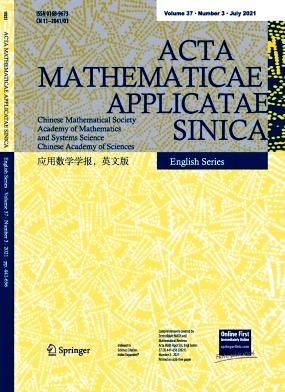Analytical Solutions to a Model of Inviscid Liquid-gas Two-phase Flow with Cylindrical Symmetry and Free Boundary
IF 0.9
4区 数学
Q3 MATHEMATICS, APPLIED
Acta Mathematicae Applicatae Sinica, English Series
Pub Date : 2024-04-19
DOI:10.1007/s10255-024-1074-y
引用次数: 0
Abstract
In this paper, we consider the free boundary value problem for a model of inviscid liquid-gas two-phase flow with cylindrical symmetry. For simplicity, we assume that the gas velocity is always equal to the liquid one and the gas and liquid are both connected continuously to the outer vacuum through the same free boundary. Furthermore, the free boundary is assumed to move in the radial direction with the radial velocity, which will affect the angular velocity but does not affect the axial velocity. We construct two classes of global analytical solutions by using some ansatzs and show that the free boundary will spread outward linearly in time by using some new averaged quantities.
具有圆柱对称性和自由边界的无粘性液气两相流模型的解析解
在本文中,我们考虑的是具有圆柱对称性的不粘性液气两相流模型的自由边界值问题。为简单起见,我们假设气体速度始终等于液体速度,气体和液体通过同一自由边界与外部真空连续连接。此外,我们假设自由边界随径向速度沿径向移动,这将影响角速度,但不会影响轴向速度。我们通过使用一些反演来构建两类全局解析解,并通过使用一些新的平均量来证明自由边界会随时间线性地向外扩散。
本文章由计算机程序翻译,如有差异,请以英文原文为准。
求助全文
约1分钟内获得全文
求助全文
来源期刊
CiteScore
1.30
自引率
0.00%
发文量
70
审稿时长
3.0 months
期刊介绍:
Acta Mathematicae Applicatae Sinica (English Series) is a quarterly journal established by the Chinese Mathematical Society. The journal publishes high quality research papers from all branches of applied mathematics, and particularly welcomes those from partial differential equations, computational mathematics, applied probability, mathematical finance, statistics, dynamical systems, optimization and management science.

 求助内容:
求助内容: 应助结果提醒方式:
应助结果提醒方式:


